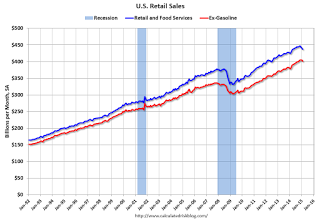Don’t bother counting me in the camp that thinks they can predict when the next recession will hit. The current consensus from those who try to do such things seems to be sometime in 2020, but I don’t think anybody really knows.
But that does not mean that keeping an eye out for economic signals is not worth doing. If the consumer credit cycle, for instance, is nearing a top, it very well may impact what multiple of current earnings you are willing to pay for shares of financial services companies. When you see strong return on equity metrics for full year 2018 this earnings reporting season, you might consider the notion that further expansion could be minimal.
In recent months I have come across a couple of interesting press reports that help shed some light on where we are in the current consumer credit cycle, both from the Wall Street Journal.
First, we had a piece in mid December about how credit reporting giant Experian was going to start including cell phone bills in credit reports. The goal is to boost credit scores so that lenders can widen their pool of eligible borrowers:
“Most lenders tightened standards dramatically after the 2008 financial crisis, and have been in intense competition for the most creditworthy borrowers ever since. And while most large banks have limited appetite for the subprime borrowers they lent to in the runup to the financial crisis, some have been eyeing customers with thin borrowing histories as a new revenue stream, a sign the lenders believe the good economy still has room to run.”
So rather than scare their investors and regulators by accepting lower credit scores when considering new borrowers, why don’t we ask the credit scoring bureaus to find ways to raise credit scores so that more people qualify. Yikes.
And cell phone bills are not the full extent of the changes. The article goes on:
“Fair Isaac Corp. , creator of the widely used FICO credit score, is close to launching a new credit score in partnership with Experian that will factor in consumers’ history managing their checking and savings accounts, which will give a boost to most consumers who keep at least several hundred dollars in their accounts and don’t overdraw.”
Given that the credit reporting companies get paid by the lenders, not consumers, it stands to reason that when approached by their customers to refine their scoring methodologies, they were amenable to the idea. Kind of reminds me of the scene in the movie The Big Short when the Standard and Poor’s employee explains why they rated all of those sub-prime mortgage bonds triple A; “because if we didn’t give them the ratings they wanted, they would go down the street to our competitor.”
The signs of a topping credit cycle don’t end there, unfortunately. It appears unconventional mortgage underwriting is making a comeback as well:
“Aryanna Hering didn’t have pay stubs or tax forms to document her income when she shopped around for a mortgage last year—a problem that made it tough for her to get a loan. But the nursing student who works part time providing home care for children and the elderly eventually hit pay dirt: For a roughly $610,000 home loan, a mortgage company let her verify her earnings with 12 months of bank statements and letters from clients. Ms. Hering said money she collects from roommates and from renting to Airbnb guests covers more than two-thirds of her roughly $4,300 in monthly payments, and her earnings cover the rest.”
While not a large proportion of the overall home lending pool, these types of loans are growing quickly:
“Lenders issued $34 billion of these unconventional mortgages in the first three quarters of 2018, a 24{01de1f41f0433b1b992b12aafb3b1fe281a5c9ee7cd5232385403e933e277ce6} increase from the same period a year earlier, according to Inside Mortgage Finance, an industry research group. While that makes up less than 3{01de1f41f0433b1b992b12aafb3b1fe281a5c9ee7cd5232385403e933e277ce6} of the $1.3 trillion of mortgage originations over that period, the growth is notable because it came as traditional home loans declined. Those originations fell 1.2{01de1f41f0433b1b992b12aafb3b1fe281a5c9ee7cd5232385403e933e277ce6} over the same period and were on track for a second down year in 2018.”
So what exactly were the terms of the loan Ms. Hering received? Tell me if this sounds familiar:
“Ms. Hering, who is 30 years old, received a loan at a rate of just over 6{01de1f41f0433b1b992b12aafb3b1fe281a5c9ee7cd5232385403e933e277ce6} for the first five years; it adjusts after that.”
Do these stories mean that the economy is about to collapse a la 2008? Of course not. All it means is that the business cycle is alive and well and that consumer lending has reached the point where prime borrowers have reached a level of debt they are happy with and lenders are now stretching a bit to grow. This happens every cycle, frankly. What it tells me is that delinquency rates are probably troughing out and overall credit quality and lender returns are probably peaking.
While these are important tidbits to consider when valuing financial services companies on multiples of book value or normalized return on equity, it is probably not going to help pinpoint the next recession. Leave that job to the economist community that has correctly called ten of the last five recessions, or the Federal Reserve, which has never (and will never) predicted one at all.
SOURCE: The Peridot Capitalist – Read entire story here.

